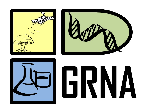Banca de QUALIFICAÇÃO: CLAUDIANE SARMENTO VIANA
Uma banca de QUALIFICAÇÃO de MESTRADO foi cadastrada pelo programa.STUDENT : CLAUDIANE SARMENTO VIANA
DATE: 10/02/2023
TIME: 14:00
LOCAL: Sala 432 - BMT2
TITLE:
MOLECULAR VARIABILITY OF Fusarium solani CAUSAL AGENT OF DRY STEM CAUSES OF MANIOCAN STEM ROOTS FROM THE REGION OF WESTERN PARÁ.
KEY WORDS:
Genetic structure. Micro-scale. Cryptic sexual cycle.
PAGES: 29
BIG AREA: Outra
AREA: Ciências Ambientais
SUMMARY:
Cassava (Manihot esculenta) is of great importance to the region of western Pará, but in recent years, producers are experiencing difficulties in maintaining the crop due to the occurrence of diseases caused by phytopathogens, including Fusarium solani, the causal agent of root rot. Micropropagated materials are being delivered to producers mainly in the producing communities of Santarém, Mojuí and Belterra in order to minimize damage, but still insufficient to contain severe damage, which can be explained by the variability of the pathogen in the region. This work aims to determine the molecular and pathogenic variability of isolates of Fusarium solani, the main causal agent of dry rot of cassava roots, both on micro scale and among municipalities in the region of western Pará, with the intention of understanding the pathogen-host interaction and thus obtain information aimed at planning management and conservation of cassava. The isolates used in this work will be obtained by isolation or from the collection of the Laboratory Genetics of Interaction - LGI / Ufopa. The micro-scale characterization will be performed in an area with high incidence while the macro-scale characterization, roots with rots will be collected from at least 7 municipalities in the region. Isolation from root tissue will be performed from disinfection with alcohol and sodium hypochlorite; plating on BDA medium supplemented with amoxyquin (100ug/ml), conditioned at 25°C; purification; conservation and production of monospore colonies. The isolates will be conserved by the Castellani method and with mineral oil. In the DNA extraction process the Wizard kit will be used and the molecular characterization by the use of RAPD and ISSR molecular techniques with 10 and 4 primers, respectively, through the use of PCR. Bands will be generated and visualized by agarose electrophoresis and stained with blue green, visualized in a blue light transluminator. Bands will be coded as presence or absence (1 or 0, respectively). Dendrograms will be obtained by UPGMA clustering from the genetic similarity matrix generated through Jaccard's coefficient among Fusarium solani isolates and the genetic structure of the population or subpopulations of the species will be estimated by AMOVA. The pathogenic variability will be evaluated of the isolates obtained in micro-scale and of the representatives of each group obtained in the clusters. It is expected to infer: the preferential route of reproduction (clonal, sexual or mixed) and variability existing at the micro-scale; as well as the variability between communities and municipalities in the region of Western Pará. To determine if there is variability in pathogenicity at micro-scale and macro-scale, and if it is associated with molecular variability. As a consequence, it is expected that this work can help in decision making in the management and choice of varieties, guaranteeing a more stable production for family farming and avoiding the genetic erosion of this species that is so important to Brazil.
COMMITTEE MEMBERS:
Presidente - 1966924 - CARLOS IVAN AGUILAR VILDOSO
Externo ao Programa - 1783034 - EDWIN CAMACHO PALOMINO - nullInterno - 1987988 - GABRIEL IKETANI COELHO




